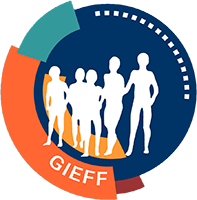Report on the 8th Göttingen International Film Festival
May 24th - May 28th, 2006
The Festival Programme was composed by the international selection committee, including former and new memebers. 34 filmmakers attended the festival and discussed their films with students and other filmmakers. More than 270 films had been submitted. 55 films were selected, about 50 hours of screening time. 700 guests from 28 countries, from all over Europe, but also from Brasil, Canada, China, India, Taiwan, Thailand and USA, visited the festival. Discussions were going on everywhere, in the cinema, in the cafeteria, in the entrance hall late at night. Additional to the student film competition and the presentation of new productions the festival had three main topics: Films on East European countries were shown during the whole festival. "Representing the Other on TV" was discussed at a Roundtable Discussion on Thursday and "Globalisation and Local Consequences" was the central topic on Sunday. Additionally, a regional focus was placed on Israel, India and Russia.
In the student film competition 19 films from 10 different countries were shown.
This year's Student Award Winner was selected by Martin Gruber (Germany), Karl Heider (USA), and Rossella Ragazzi (Norway).
The Student Award went to two films. The winning films are:
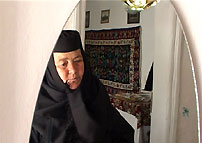
Into the Field
by Alyssa Grossman, Great Britain 2005
Start video: (Into the Field - modem) (Into the Field dsl)
“Into the field” follows the everyday “secular” lives of nuns in a Romanian orthodox monastery. Documenting the nuns’ activities, relationships and roles within their community, the film incorporates sequences of stop-motion animation to depict some of the anthropologist’s own challanges of working in the field.
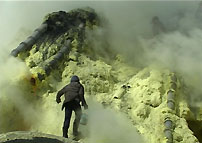
Sulfur
by Florian Geyer, France 2006
Start video: (Sulfur - modem) (Sulfur dsl)
The Kawah Ijen (Green Crater) is an active volcano situated on the extreme east side of the island of Java, where the biggest hydrochloric and sulfuric acid lake in the world is located. Since 1968 forced sulfur miners work by day and night, in untenable conditions in a hostile, toxic and harmful crater. Gathering the «yellow gold » these subhumans are paid more than the national average… at the price of a life span reduced by the gases they breathe and the weight they carry. All this for what?
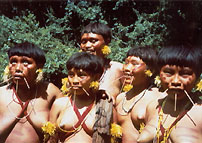
A special mention goes to the film
Napepe – Blood Memory and Cultural Rights Among the Yanomami Indians
by Nadja Marin, Brazil 2004
Start video: (Napepe - modem) (Napepe dsl)
Davi Kopenawa was a child when a group of researchers went into the Yanomami territory to collect the first blood samples of the Yanomami Indians. This documentary collects the memories of this 1968s expedititon told by geneticists, anthropologists and the Indians. It shows the cultural clash between science and the traditional values of the Yanomami culture. Napepe is how the Yanomami call the whites, also the enemies and the foreigners.
Meeting point Göttingen International Film Festival
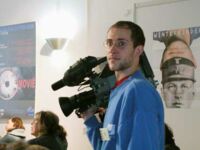
Looking back
Andreas Grimm, trainee at IWF, made this year's Göttingen International Film Festival filmic review.
Start video:
Festival Video (modem)
Festival Video (dsl)
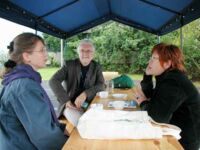
There were many opportunities for discussion. Student groups from various universities came to Göttingen. Tthey took advantage to meet the filmmakers and their student fellows from all over the world.
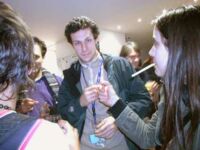
Festival opening ceremony on Thursday evening
Discussions with filmmakers and with other student filmmakers are typical of our festival. Still, Florian Geyer and Alyssa Grossmann do not know that they will be this year's Student Award winners.
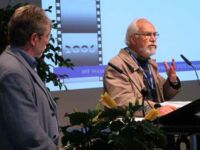
19 films in the student film competition, 36 films in the main programme
The audience was deeply engaged in looking at films, listening to the comments of the filmmakers present, putting forward questions. Asen Balikci (Bulgaria) one of the expierenced ethnographic filmmakers never got tired to discuss the revealing film on the Netsilik Eskimo series.
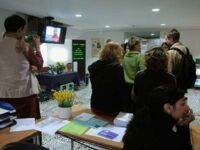
In the evening the entrance hall turned into a meeting place where one could look at the films and discuss them immediately.
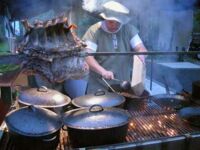
After the Student Award ceremony people met at the festival dinner.
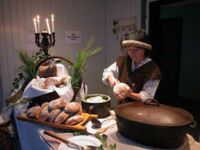
This year's festival dinner was most exotic.
People from a nearby village turned our cafeteria into a medieval place serving the food of the time.
After the Festival directors of European Anthropological Film Festivals met in a workshop and discussed the possibilities of closer collaboration. A group Coordinating Anthropological Film Festivals in Euurope (CAFFE) is in the process of foundation. Further information will be published on the website of the Visual Anthropology Network of the European Association of Social Anthropologists (VANEASA).
